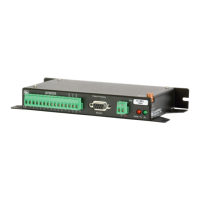Appendix F. Time Series and Spectrum
Graph Information
The AVW200 uses an audio A/D for capturing the sensor’s signal. The
number of samples acquired in this period is 4096 points. A Fast Fourier
Transform (FFT) algorithm is used to create a frequency spectrum. The
frequency spectrum is displayed in the graph labeled “Spectrum” (see Figure
1.1-1). This graph shows each of the frequencies and the voltage amplitude in
mV RMS.
The “Time Series” graph is the acquired or sampled data in the time domain.
The graph shows the combination of all the frequencies coming from the
vibrating wire sensor shortly after the sensors excitation. The dominate
frequency is the natural resonating frequency of the vibrating wire. The other
frequencies can include noise pickup (i.e., motors close to the sensor, pickup
from long wires), harmonics of the natural frequency or harmonics of the noise
(50/60 Hz harmonics) and/or mechanical obstruction (loosing of the wire or the
wire vibration is physically changed by the package movement). The
AVW200 computes a signal-to-noise diagnostic by dividing the response
amplitude by the noise amplitude.
The “Time Series” graph shows the decay from the start of the sampling to the
end of the sampling. The decay is the dampening of the wire over time. The
AVW200 computes a decay ratio diagnostic from the time series ending
amplitude divided by the beginning amplitude. Some sensors will decay very
rapidly, others not. It is a good idea to characterize the sensors decay and
amplitude when the sensor is new, so that over time the health of the sensor can
be monitored.
By changing the begin and end frequencies in the options tab, the affects of
narrowing can be of value for troubleshooting and solving problems with errant
sensors, or improving the measurement. Care should be taken to ensure that
when you change the begin and end frequency that the frequency range still
captures the sensor’s signal.
F.1 Good Sensor Examples
Figure F.1-1 and Figure F.1-2 are measurement results from the same sensor —
the first measurement was taken with a swept frequency between 200 and
2200 Hz while the second measurement was taken with a swept frequency
between 200 and 6500 Hz. Using the tighter frequency range (Figure F.1-1),
the measurement recorded the greatest sensor noise at a frequency of 935 Hz
with a signal-to-noise ratio of 318. Sweeping the same sensor over the far
wider range of 200 to 6500 Hz (Figure F.1-2) uncovers noise at 4150 Hz with a
signal-to-noise ratio of 21.4, which is 15 times less than the signal-to-noise
ratio of the first measurement. This illustrates that better readings are produced
when the sensor is swept over more narrow frequency ranges. Also, with the
narrowed range (Figure F.1-1), the noise frequency that exists at 4150 Hz is
completely ignored and is not relevant because it lies outside the sampling
frequency range; excitation is limited outside the swept frequency range as
well.
F-1

